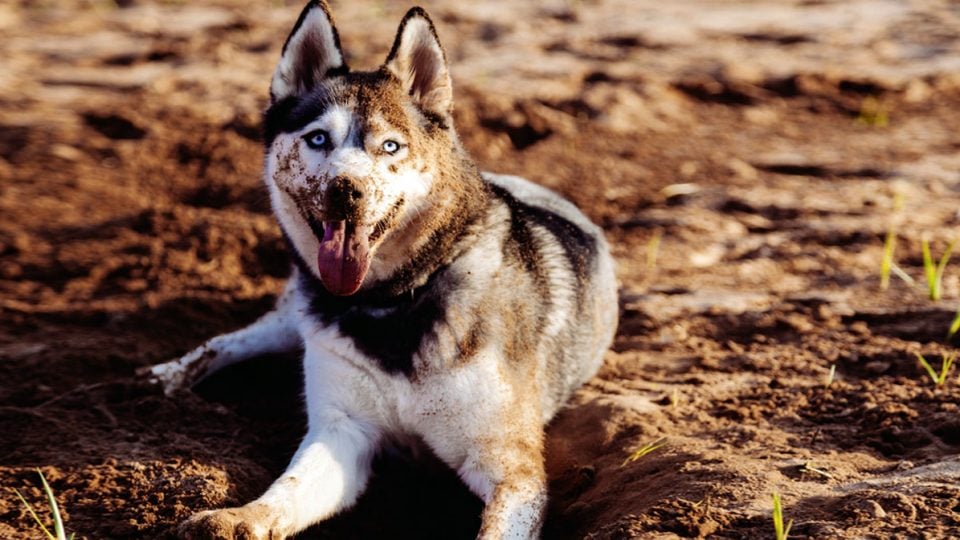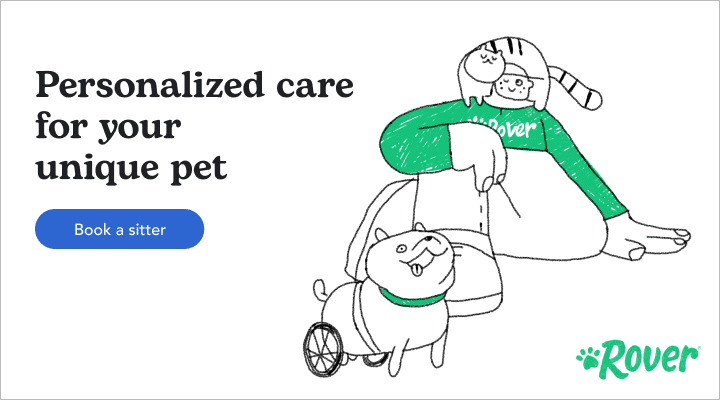Their thick fur not only makes them look regal, it keeps them warm in temperatures well below freezing. Husky lovers know: grooming a Siberian can feel like a big undertaking.
It’s important to know that Siberian huskies as a breed have double coats. Double-coated dogs require a little more maintenance than smooth or single-coated dogs, and their hair can be either short or long. At least once a year, double-coated dogs will shed their entire undercoat. This is a natural process that occurs in climates warmer than their native Siberia, helping them manage heat.
Huskies have short hair, and grooming them requires paying special attention to each layer of their coat.
Step 1: Brushing your husky
The good news is, huskies need less grooming than many other double-coated dogs. The most critical step to maintaining your husky’s coat is regular, thorough brushing. You should aim for at least once a week.
We suggest using a wide-toothed comb to break up mats, then following with a paddle brush to smooth and loosen stray hairs.
Your brush pattern should begin with the undercoat; brush thoroughly away from the skin to remove loose hairs. Move on next to the overcoat – brush vigorously in the direction of the hair growth to encourage shine and smoothness. Pay special attention to any matts or tangles, loosening with conditioner if necessary.
Step 2: Look out for shedding
When the weather begins to warm up, your Siberian husky will start to shed— a lot. This process is a slow one, but more frequent brushing can speed it up and keep your dog’s fur from matting and tangling. It will also reduce the number of weeks you spend following your dog around with the vacuum cleaner.
Using the same technique as the rest of the year, aim to brush your husky every day if possible. You may actually want to invest in an “undercoat rake” that’s specifically designed to remove the dead hair under his topcoat more effectively. As he sheds his underlayer in preparation for warm weather, the hair needs to be removed for new hair to grow in correctly.
Aiding this process with a brush is a good way to keep him more comfortable and control the shedding in your home.
Step 3: Bathing and fur removal
The good news is, your Siberian husky never needs to have his fur clipped by a groomer. He will naturally shed and re-grow his coats based on the temperature he lives in, and his hair will fall out before it gets too long.
Because huskies don’t produce an excess of oil, they don’t need to be bathed all that often. Aim for once a month or less, only bathing when your pup starts to smell or his hair begins to mat. If you do bathe your husky, be sure to rinse his coat thoroughly as its thickness is a magnet for leftover shampoo and conditioner. When your dog gets wet or otherwise dirty, be sure to brush out clumps and matting immediately to avoid a painful, hard-to-handle mess later on.
Overall grooming tips for your husky
- Start the brushing process very young so your dog learns to relax (and even enjoy it). Wild dogs groom each other often, so your dog will grow accustomed to it.
- Avoid clipping your dog’s whiskers. They may seem long, but he needs them for sensing motion and solid objects.
- Pay special attention to areas that mat often. These include under the tail, around the legs, and the stomach area which is often ignored.
- Clipping your husky’s nails using doggy nail clippers with safety guards will make grooming him easier.
Siberian huskies are relatively low-maintenance dogs
Although their fur looks too fluffy to be manageable, nature takes care of most of the hard stuff. Don’t be afraid to use conditioner or conditioning oils on your husky’s coat if it looks dry, and be sure not to over-bathe.
Otherwise, regular brushings and nail clippings will keep your husky looking show-worthy as well as comfortable.


